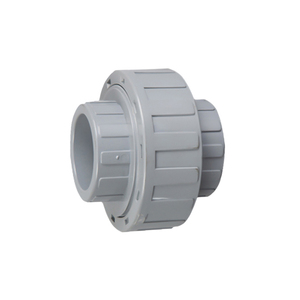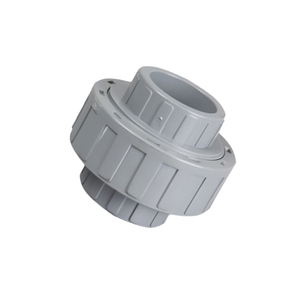
All categories
Featured selections
Trade Assurance
Buyer Central
Help Center
Get the app
Become a supplier

(354 products available)














rotary coolant union are vital components in the realm of industrial machinery, particularly within machine tool equipment. These specialized tubes are designed to convey coolant liquids in machining processes, ensuring optimal temperature control and efficient operation. rotary coolant union are crucial for maintaining the integrity and performance of machine tools, preventing overheating and extending the lifespan of equipment. They come in various configurations and materials, tailored to meet specific industrial requirements. As the demand for precision and efficiency in manufacturing grows, the role of rotary coolant union becomes increasingly significant in the landscape of modern industry.
When it comes to rotary coolant union , there is a diverse array of types available to suit different applications. Common types include stainless steel pipes, copper pipes, and plastic pipes. Stainless steel rotary coolant union are favored for their durability and resistance to corrosion, making them ideal for harsh industrial environments. Copper pipes are known for their excellent thermal conductivity, which enhances cooling efficiency, while plastic pipes offer flexibility and cost-effectiveness for less demanding applications. Each type of rotary coolant union is engineered to provide optimal performance, ensuring that machine tools operate at their best capacity.
The primary function of rotary coolant union is to transport coolant fluid to various parts of the machine tool, preventing overheating and maintaining consistent operational temperatures. Key features of rotary coolant union include their ability to withstand high pressures and temperatures, as well as their adaptability to different machine configurations. They are designed to be leak-proof and durable, ensuring uninterrupted coolant flow. Additionally, some rotary coolant union are equipped with quick-connect fittings for easy installation and maintenance. These features make them indispensable in high-precision machining environments where temperature control is critical.
The construction of rotary coolant union involves a variety of materials, each selected for its specific properties. Stainless steel, copper, and specialized plastics are commonly used, each offering distinct advantages. Stainless steel provides strength and longevity, while copper is chosen for its superior thermal conductivity. Plastic materials, often reinforced with additives, offer lightweight and flexible solutions for certain applications. The choice of material impacts the efficiency and durability of rotary coolant union , allowing manufacturers to tailor these components to meet specific industrial needs. Advanced manufacturing techniques ensure that rotary coolant union can withstand the rigorous demands of modern machining processes.
To maximize the benefits of rotary coolant union , it is essential to select the appropriate type based on the specific cooling requirements of the machine tool. Proper installation is crucial to ensure optimal coolant flow and avoid leaks. Regular maintenance and inspection of rotary coolant union are necessary to prevent blockages and ensure efficient operation. In high-performance environments, it is advisable to use pipes with enhanced thermal conductivity for better cooling efficiency. Understanding the cooling needs of the machinery and the characteristics of rotary coolant union allows for effective management of temperature control, boosting productivity and extending the lifespan of equipment.
When selecting the appropriate rotary coolant union , several factors need to be considered to ensure compatibility with your machine tool equipment. It's crucial to assess the working environment and the specific cooling requirements of your machinery. For example, high-temperature applications may benefit from pipes with superior thermal resistance, while environments with corrosive elements might require rotary coolant union made from durable materials like stainless steel. Additionally, the size and configuration of the pipe play a significant role in its effectiveness. Proper evaluation of these parameters will lead to optimal performance and longevity of the cooling system.
Effective installation and regular maintenance of rotary coolant union are imperative for ensuring efficient operation. During installation, it's important to ensure that the pipes are securely fitted and that all connections are leak-proof. This prevents coolant fluid loss and maintains consistent cooling performance. Regular inspections should be conducted to check for wear and tear, blockages, or any signs of damage. Cleaning and servicing rotary coolant union periodically will help in preventing build-up and ensure a smooth coolant flow. Implementing a routine maintenance schedule can significantly enhance the reliability and lifespan of your cooling system.
With growing awareness around environmental impact, the choice of rotary coolant union can contribute to sustainability efforts. Opting for materials that are recyclable or have a lower environmental footprint can be beneficial. Some manufacturers offer eco-friendly options that minimize waste and energy consumption during production. Additionally, ensuring that rotary coolant union are used efficiently can help reduce overall energy usage in machine tool operations. By adopting environmentally responsible practices, industries can align with global sustainability goals and reduce their carbon footprint.
The choice of material for rotary coolant union should be based on factors such as thermal conductivity, corrosion resistance, and mechanical strength. Stainless steel, copper, and specialized plastics each offer distinct advantages, and selecting the right material depends on the specific application and environmental conditions.
Proper installation of rotary coolant union involves ensuring secure connections, leak-proof fittings, and alignment with the machine tool's specifications. It's advisable to follow manufacturer guidelines and consult with professionals to achieve optimal setup and prevent future issues.
Maintenance challenges for rotary coolant union include blockages, wear and tear, and corrosion. Regular inspections and cleaning can mitigate these issues, ensuring efficient operation and longevity. Implementing a proactive maintenance strategy can address potential problems before they escalate.
Yes, sustainable options for rotary coolant union include pipes made from recyclable materials or those produced with energy-efficient methods. These choices can help reduce environmental impact and align with sustainability initiatives in industrial operations.
Customization of rotary coolant union is possible to meet the specific requirements of different machine tools. This may involve adjustments in size, material, and configuration to ensure optimal performance and compatibility with the machinery.